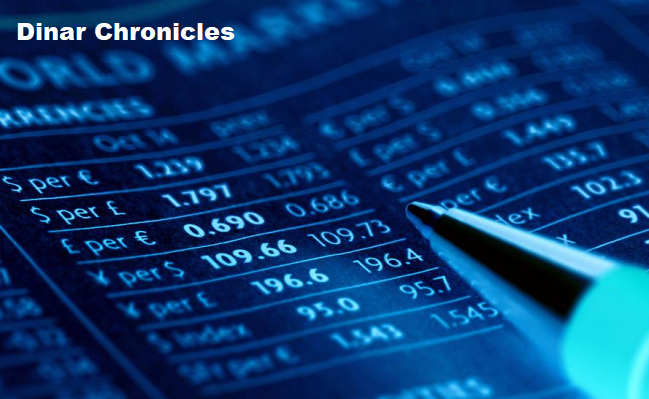If you are considering selling your digital art, you may wonder if you can sell it as an NFT. This article covers the basics, including how to create an NFT, the difference between digital art and NFT, and how to sell NFT. It will help you make the best possible decision for your business.
Overview
The digital art market has been experiencing massive price increases over the past few months. This has prompted the fine art establishment to take notice of digital art NFT as a legitimate collectable commodity and valuable asset. NFTs also provide a way for digital artwork to be sold and bought for cash, which is a boon for both the artists and the buyers. This new way of acquiring and selling digital artwork is more accessible than ever. It also appeals to an already-existing audience that enjoys the physical experience of a work of art.
While many digital artists are fed up with the Big Tech platforms, they see the potential in NFTs, which provide artists with a new way to sell their digital art and build a career. Chmiel argues that the Big Tech boom is likely to be over, but digital art is a growing segment of the marketplace and will soon have a place in every investor’s portfolio.
As the market for digital art NFT continues to grow, NFTs are becoming more popular than ever. Many artists are making massive sales to new crypto-audiences, and celebrities are joining the bandwagon. In addition to bringing new opportunities to artists, NFTs allow artists to represent ownership of unique assets.
Can I sell my digital art NFT?
If you want to sell your digital art NFT, you should be aware of the risks involved. To avoid these risks, consider the royalty you want to receive for each sale. The amount of royalty you charge should be proportional to the value of your work, as higher royalty rates will mean more money per sale and a decrease in the number of sales of your NFT art.
First, you should check the formats that are allowed on NFT platforms. For instance, GIF, PNG, and WEBP are accepted by most NFT platforms. Then, check the price you want to sell your digital art. You can either set a fixed price for the artwork or make it available for unlimited bids. Another option for selling your art as NFT is to post a timed auction where you set a certain time frame during which you can accept bids.
NFTs are the future of art. They are a great way to sell your digital art NFT. The primary market comprises newly-listed artworks, and the secondary market features artworks relisted by prominent collectors. In addition, NFTs are filled with diverse works of art, making it impossible for anyone to walk away empty-handed.
Is NFT considered digital art?
The question, “Is NFT considered digital art?” may be tricky. Unlike traditional works of art, NFTs are not protected by copyright. That means you can use an NFT to profit from other people’s work without the original copyright holder’s permission. However, you can still sell an NFT, which can be done later.
Although the digital art NFT market is still relatively small, the future of this new type of art is promising. With its combination of public and private benefits, this new type of art has the potential to revolutionize the creative industry. While it is still in progress, NFTs have clear advantages over traditional art. First, they are far more accessible, and second, their purpose is quite different from traditional art. For example, digital art NFT can serve as status symbols or as an artist’s work.
Another advantage of NFTs is that they allow artists to exhibit their work and receive a fair price. As a result, NFTs have created a whole new market for artists. Often, NFTs have a high return on investment, as the artists receive royalties on every sale. Furthermore, the NFTs marketplaces eliminate the need for go-betweens, which allows artists to deal directly with buyers and enjoy the profits of their work.
How do I turn my art into NFT?
Turning digital art into NFTs can be a lucrative endeavour. If you know how to convert your artwork to NFTs, you can sell them on the market at astronomical prices. NFTs are an entirely new form of art, and selling them has many benefits and disadvantages. Many different programs can convert your art to NFTs.
First, you must upload the digital art you wish to turn into NFTs. Then, it would help if you created a unique instance of your digital art NFT on the Blockchain called minting. Once published on the Blockchain, you can sell it to a buyer. This way, you can make passive income from secondary sales, which is particularly helpful if your artwork is popular.
Another benefit of NFT art is the opportunity to receive lifetime royalties. You can program these royalties into your digital artwork, ranging from two to ten per cent. This royalty percentage ensures that you’ll receive interest on the resales for the life of the work.
Is NFT art worth buying?
NFT art is similar to collectables in that it’s released in a digital art NFT form. This means that anyone can create and sell these digital art pieces. Some of these are unique pieces of art, while others are set of characters. Some are even based on aspects of Internet culture or famous moments caught on camera. The first thing to remember is that collecting NFTs is different from buying paintings. They can be high-quality reproductions of original works of art.
If you like NFT art and want to support artists, it’s worth buying. However, buying what you can afford to lose would be best only. Investing in affordable art that you like to look at and appreciate is always better. If you’re only buying art because you think you’ll sell it in the future, you should reconsider.
When deciding which digital art NFT art is worth collecting, you’ll want to take some time to research artists before making a purchase. Make sure you find a talented artist who is passionate about their work and has a growing number of fans. Keep an eye on the artists’ social media pages to see how their works sell.
What kind of NFT art sells?
There are a variety of different ways to sell NFT art. You can sell a painting, drawing, 3D model, or even animation. Another option is generative NFT art, which is more technical and can produce thousands of unique pieces. There are a few important things to consider when selling your NFT art.
If you are serious about selling your NFT art, you must ensure you tokenize your works on the Blockchain. This digital transaction system makes it difficult for someone to steal any information, including the copyright ownership of your work. Also, the Blockchain is a good way to keep track of creation records.
While the NFT trend has benefited artists, collectors, and speculators, it has disadvantages. It is a new medium that requires a certain level of tech expertise, which can make it difficult for some creators. It may also limit the reach of young, underrepresented artists. As a result, legal experts are trying to determine how copyright laws will impact this new art form.
Many in the conventional art world are horrified by the phenomenon and can’t plug these digital works into their preconceived notions. Traditional collectors are often older and less willing to parse the Internet’s jargon. But Sotheby’s, which announced a partnership with NFT artist Pak, understands the value and financial potential of NFT art.
Conclusion
The NFT is a digital file identifier used to make an image unique. Digital files are easily copied, but an NFT ensures a piece is unique and authentic. This digital file identifier is particularly valuable in the art market, where one single image can have tremendous value. The NFT is also used to protect artists’ copyrights online.
NFT is rapidly penetrating and changing the global art market. A clear example is the $69 million trade of Beeple’s “Everyday – The First 5000 Days” on NFT. Before the introduction of NFT, digital art was largely considered worthless and unmarketable. NFTs have given digital artists a new outlet for their art, making the art market more open and diverse.
NFT-Art is a new classification system for digital artworks. It allows artists to earn from their work and avoid the hassle of collecting money from clients, preparing files for printing, waiting for feedback, and adjusting their works to fit the needs of a particular client.


























